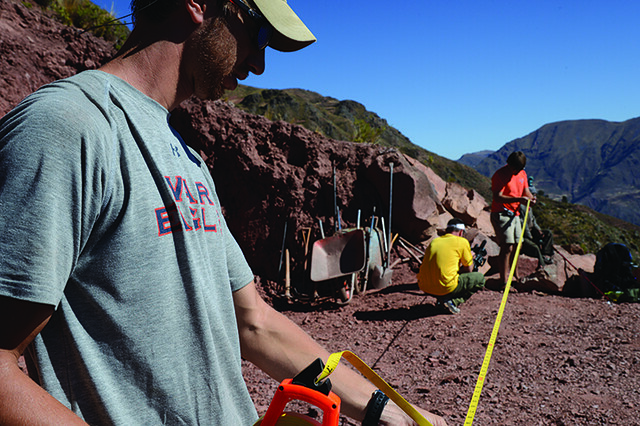Editor’s Note: When Jim Killian, who directs communications and marketing for the Samuel Ginn College of Engineering, was invited to join a media team covering students traveling to Bolivia, he was not sure what to expect — just that it wouldn’t be a conventional assignment. A group of eight engineering students (and one in zoology) would be making the trip as part of a five-year commitment to help the residents of the small Andean village of Quesimpuco acquire sustainable, accessible technology. The following are some of his observations.
PLANNING FOR BOLIVIA IS NOT AN EASY SHOT. It’s not really a tourist venue, at least not a mainstream one, and our destination was about as remote as it gets — a tiny Quechuan village in the southern section of the altiplano, the high plateaus that give way to the grey substance of the Andean mountains. It was chosen, according to Will McCartney, a biosystems engineering major on the student team, in part for that very reason — “We’re not going to make it that easy on ourselves,” he explained.
So my planning began a month before, starting with office visits to Steve Duke, a faculty member in the Department of Chemical Engineering who was coordinating the trip, and by reading through the thick, tabbed manual offered through SIFAT — Servants in Faith and Technology — who would help guide us. The students began their journey a full six months before, meeting formally on campus every week, and informally more often as the departure date drew near.
In addition to the logistics, they had to pull together plans and equipment for the two projects they would take to Quesimpuco — a bench-scale hydroponics demo and an irrigation survey. For most, it would be their first trip; two undergraduate students, McCartney and Travis Bugg, had gone before. Mary Robbins, a doctoral student in civil engineering had also made the trip. She would prove to be an incredible asset.
The trip began in the last week of Auburn’s typically hot August, to a country just coming out of its winter season. Heeding the SIFAT manual, I packed in layers to the extent that my bag would allow, but then I wasn’t too worried. I’m a fairly seasoned camper. I was also blissfully ignorant of what I would be facing in the mountains. It all turned out okay. I was also advised to bring lots of “sports” bars, a.k.a. candy bars, just in case — what? I didn’t get fed? This turned out fine as well. Nobody starved.
We arrived in La Paz, Bolivia’s administrative capital, just before dawn on a flight that left Miami at 10 p.m. the night before. It was light before we cleared customs, exiting the terminal to see mountains in the distance, including snow-capped Illimani at more than 21,000 feet. We were greeted by Isaac Paredes and Angel Roman, who work for SIFAT’s sister organization, CENATEC — an acronym in Spanish for National Center of Technology for Integrated Development. They were joined by Freddy Churata, a ministry student, and Tommy Corson, SIFAT’s executive director, who flew down separately, coming through Atlanta and Miami from his Lineville campus 70 miles north of Auburn.
We piled into two Nissan Patrols, four-wheel drive SUV’S that would take us through the altiplano at 12,000-14,000 thousand feet into the Andean divide. It would be an all-day trip lasting nearly 13 hours, maybe more. Even though daylight lingers in the mountains, it was dark when we got to Quesimpuco. It did not occur to me that our arrival would be anything but unnoticed, so it was a real surprise when a delegation of villagers came to greet us.
[miniflickr photoset_id=72157631952462015&sortby=date-posted-asc&per_page=50]
